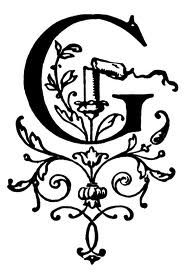-
Scroll Page | Stop Scrolling

In a remarkable volte-face, Joseph Yam Chi-kwong last week proposed
changing some of the fundamentals that have underpinned the Hong Kong
dollar (HKD) / US dollar (USD) linked rate system for the past 29 years.
His proposals, which came in a 34-page academic paper, were all the
more surprising both for their timing -- just ahead of the hand-over to a
new administration in Hong Kong -- and because until three years ago
Yam himself -- as head of the Hong Kong Monetary Authority (HKMA) -- was
the staunchest defender of the 7.8 peg to the USD.
So committed was he to the fixed rate that he chose to display AM78 (“Always Maintain 7.80”) on his government car number plate.
From the outset Yam argues for maintaining the current independence of the HKMA and strong governance mechanisms for monetary policy in Hong Kong. However, despite claiming that his paper “should not necessarily imply the need for change”, Yam has in broad terms suggested departing from the current set of Currency Board rules and introducing discretion in the setting of monetary policy.
Specifically he suggested (a) unifying the two different Convertibility Undertakings for the two elements of the monetary base (i.e. making banknotes in circulation and bank balances at the HKMA convertible to foreign currency at the same rate), (b) shifting the width, slope and centre point of the trading band periodically, (c) shifting from the USD either to the RMB or to an undisclosed basket of currencies as the anchor for the HKD, and perhaps (d) ultimately doing away with “an exchange rate target or zone”, focusing instead on a defined monetary policy objective (such as an inflation target).
He argues, correctly I believe, that following a series of reforms in 1988, 1993, 1998 and in the early 2000s, mostly under his own leadership, Hong Kong’s monetary system now has the “technical capability” to operate in the same way as most other central bank monetary systems. Consequently changes (a) through (d) would be entirely feasible.
In short Yam considers that it would be possible and desirable to operate the system with discretion and using a domestic anchor -- such as an inflation target – instead of relying on rules and an external anchor. He does not propose that such a system be introduced immediately, but he does advocate reviewing the current system and considering the introduction of these changes “in the fullness of time” (p.6). He also admits that, “not all jurisdictions with the freedom to exercise discretionary monetary policy have been successful...” My view has always been that – given the very high degree of dependence of the Hong Kong economy on both trade and external capital flows – it would be hugely difficult to achieve any inflation target. This is because it would effectively require the authorities correctly to predict when the inflows (or outflows) might occur and their numerical size, as well as to know in advance the lag in effect between the money flows and their impact on growth and inflation in Hong Kong. These tasks are difficult enough in a large, relatively self-sufficient economy like the US. They have recently proved very challenging in the UK. Setting and achieving such targets is an almost impossible task in a small, highly open economy and at the very least would require the setting of a very wide target consumer price index (CPI) inflation range such as 2-8% if the authorities were to stand any chance of hitting it consistently. Effectively the authorities would be substituting a target inflation range with a more variable exchange rate for a known exchange rate range which nevertheless generates inflation rates significantly different from those in the US. In sum, it is questionable whether making such fundamental changes is advisable. But did Yam give good reasons for making these switches?
The first reason he gives is that “inflation in Hong Kong has, at times, been uncomfortably high, and asset bubbles have been a feature of Hong Kong’s economic development”. But if we consider other economies in the Asian region that have pursued managed exchange rates, their record in avoiding either inflation or asset bubbles is by no means something to be emulated. Singapore’s record is patchy at best, sometimes with higher inflation than Hong Kong, and a very erratic growth performance of the economy. His second reason is largely speculative. He implies an inevitable weakness of the USD based on the US lack of fiscal discipline and the current need for quantitative easing. However, Japan has run fiscal deficits for the last 20 years, has the highest debt-to-GDP ratio of any major economy, and conducted quantitative easing (QE) for five consecutive years (2001-06), yet the economy has suffered extended deflation and the yen has remained strong. Conversely, he over-estimates, in my view, the speed with which the Renminbi (RMB) will become an international reserve currency. In practice it will take decades before the RMB is any challenge to the US dollar. The US dollar has in fact been a very suitable and sound anchor currency for the HKD over these past 29 years, though of course there have been times when monetary policy in the US has not been appropriate for Hong Kong.
The third reason he gives is more esoteric (pp.31-32). He says that Mainlanders disdain the HKD because the RMB has appreciated to an arithmetic value that is stronger than the HK dollar since July 2005. It is true that the HKD has depreciated as a result of its peg to the USD. However, even if we ignore the huge depreciation of the RMB between 1983 and 1994 (from 2.0 to 8.3 per USD), it is normal under the “Balassa-Samuelson effect” for currencies of rapidly developing economies to experience real exchange rate appreciation. Consequently whereas China could experience exchange rate appreciation against the USD in the years to come, it is not obvious that Hong Kong, already a mature and developed economy with a high per capita income, should experience a similar real exchange rate appreciation. In conclusion, any departure from rules in favor of discretion is risky. Yam’s arguments amount to fairly standard, well-worn set of proposals that have been considered over the years both by the HKMA and by academics. In my view the conditions needed for their implementation are not likely to be reached any time soon, and may never be reached. In the meantime pegging the HKD/USD rate at the existing 7.8 remains the safest and soundest basis for monetary stability in Hong Kong.
任志剛羅致光上週在一個顯著的變臉,建議改變一些支撐,為過去29年港元(港元)/美元(USD)聯繫匯率制度的基礎。在34頁的學術文章,對他的建議,為他們的時機都更令人吃驚的 - 只是前面的手在香港的新政府 - 因為直到三年前陰自己 - 香港金融管理局(金管局)的頭 - 7.8美元掛鉤的堅定捍衛者。
所以犯下了他,他選擇了固定利率AM78(“始終保持7.80”)上顯示,他的政府車號牌。從一開始就任志剛認為,為維持目前在香港金管局的貨幣政策和強有力的治理機制的獨立性。然而,儘管聲稱,他的論文“不應該必然意味著變革的必要性”,陰有籠統建議離開目前的貨幣發行局的規則集,並介紹在設定貨幣政策決定。具體來說,他建議:(一)統一兩種不同的貨幣基礎的兩個要素(即金管局在兌換外幣以同樣的速度在市面流通的紙幣及銀行結餘)兌換保證,(二)轉移的寬度,坡度和交易帶的中心點,定期(三)從美元轉向人民幣或貨幣籃子為香港迪士尼樂園的錨不詳,也許(四)最終做了“匯率目標或區域“,而是專注於定義的貨幣政策目標(比如通脹目標)。他認為正確我相信,一系列的改革,在1988,1993,1998和在早期2000年主要是根據他自己的領導,之後,香港的貨幣體系現在已在“技術能力”以同樣的方式運作,因為大部分其他央行的貨幣體系。因此,(一)至(d)的變化將是完全可行的。
在短期任志剛認為,這將是可能的和可取的系統操作謹慎,並使用國內的錨 - 而不是依靠規則和外部錨 - 如通貨膨脹目標。他不建議立即推出,這樣的系統,但他不主張檢討現行制度,並考慮“在豐滿的時間”(六)引入這些變化。他也承認,“並非所有司法管轄區,自由地行使酌情貨幣政策已經取得了成功......”我的觀點一直認為 - 香港經濟貿易和外部資本流動的依賴程度非常高 - 這將是巨大的任何通脹目標難以實現。這是因為這將有效地要求當局正確地預測時可能發生的流入(或流出),其數值大小,以及事先知道在滯後效應之間的資金流動和其對經濟增長和通貨膨脹在香港的影響香港。這些任務是在像美國這樣的大,相對自給自足的經濟困難足夠。最近,他們已經證明了在英國非常具有挑戰性的。設置和實現這樣的目標,是在一個小型的,高度開放的經濟體系,至少需要一個非常廣泛的目標消費物價指數(CPI),如2-8%的通脹範圍的設置幾乎是不可能完成的任務,如果當局擊中它始終站在任何機會。有效,當局會代與一個已知的匯率範圍,但產生在美國的通貨膨脹率顯著不同的浮動匯率的目標通脹範圍。總之,這是值得商榷的,作出根本性的變化是否是明智的。但是蔭給出很好的理由,使這些交換機?
他給人的第一個原因是“在香港的通脹率,有時令人不安的高水平,資產泡沫,一直是香港經濟發展的功能”。但是,如果我們考慮,追求管理的匯率在亞洲地區其他經濟體,他們在避免通貨膨脹或資產泡沫的紀錄是絕不要效仿的東西。新加坡的記錄充其量是片狀的,有時比香港高通脹和經濟的一個非常不穩定的業績增長。他的第二個原因主要是投機。他暗示美國的財政紀律的缺乏和目前需要量化寬鬆的美元不可避免的弱點。然而,日本在過去的20年,已運行的財政赤字,具有最高的債務與國內生產總值比任何主要經濟體,並進行了定量寬鬆(QE),五年(2001-06)連續兩年,但經濟已遭受延長通貨緊縮和日元依然強勁。相反,他過高估計,在我看來,速度與人民幣將成為國際儲備貨幣。在實踐中,將十年前人民幣對美元的挑戰。美元實際上一直在一個非常合適和完善的貨幣錨的樂園,這些過去29年,但當然也有已經在美國的貨幣政策一直沒有適當的時候為香港。
他給人的第三個原因是更深奧(pp.31-32)。他說,內地不屑港元,因為人民幣已經升值算術值,這是自2005年7月比港元更強。這是真的,港元貶值作為其盯住美元的結果。然而,即使我們忽略了人民幣在1983年和1994年(從2.0到8.3%美元)之間的巨大貶值,這是正常的,根據“巴拉薩 - 薩繆爾森效應”的迅速發展中經濟體遇到的實際匯率升值的貨幣。中國因此而在未來幾年內可能會遇到兌美元匯率升值,不是很明顯,香港,已經是一個成熟和發達的經濟,具有很高的人均收入應該遇到類似的實際匯率升值。總之,任何贊成自由裁量權規則的背離是危險的。蔭的論點金額相當標準的,陳腐的一套多年來已考慮由金管局和學者的建議。其實施所需的條件,在我看來是沒有可能達成任何時間很快,而且可能永遠不會達到。在此期間,掛在現有的7.8港元/美元匯率仍然在香港的貨幣穩定,最安全的堅實基礎。
John Greenwood is Chief Economist at Invesco, and the architect of Hong Kong’s currency board in 1983. He has been a member of the Currency Board Committee of the Hong Kong Monetary Authority since 1998.

( Daily photo)

So committed was he to the fixed rate that he chose to display AM78 (“Always Maintain 7.80”) on his government car number plate.
From the outset Yam argues for maintaining the current independence of the HKMA and strong governance mechanisms for monetary policy in Hong Kong. However, despite claiming that his paper “should not necessarily imply the need for change”, Yam has in broad terms suggested departing from the current set of Currency Board rules and introducing discretion in the setting of monetary policy.
Specifically he suggested (a) unifying the two different Convertibility Undertakings for the two elements of the monetary base (i.e. making banknotes in circulation and bank balances at the HKMA convertible to foreign currency at the same rate), (b) shifting the width, slope and centre point of the trading band periodically, (c) shifting from the USD either to the RMB or to an undisclosed basket of currencies as the anchor for the HKD, and perhaps (d) ultimately doing away with “an exchange rate target or zone”, focusing instead on a defined monetary policy objective (such as an inflation target).
He argues, correctly I believe, that following a series of reforms in 1988, 1993, 1998 and in the early 2000s, mostly under his own leadership, Hong Kong’s monetary system now has the “technical capability” to operate in the same way as most other central bank monetary systems. Consequently changes (a) through (d) would be entirely feasible.
In short Yam considers that it would be possible and desirable to operate the system with discretion and using a domestic anchor -- such as an inflation target – instead of relying on rules and an external anchor. He does not propose that such a system be introduced immediately, but he does advocate reviewing the current system and considering the introduction of these changes “in the fullness of time” (p.6). He also admits that, “not all jurisdictions with the freedom to exercise discretionary monetary policy have been successful...” My view has always been that – given the very high degree of dependence of the Hong Kong economy on both trade and external capital flows – it would be hugely difficult to achieve any inflation target. This is because it would effectively require the authorities correctly to predict when the inflows (or outflows) might occur and their numerical size, as well as to know in advance the lag in effect between the money flows and their impact on growth and inflation in Hong Kong. These tasks are difficult enough in a large, relatively self-sufficient economy like the US. They have recently proved very challenging in the UK. Setting and achieving such targets is an almost impossible task in a small, highly open economy and at the very least would require the setting of a very wide target consumer price index (CPI) inflation range such as 2-8% if the authorities were to stand any chance of hitting it consistently. Effectively the authorities would be substituting a target inflation range with a more variable exchange rate for a known exchange rate range which nevertheless generates inflation rates significantly different from those in the US. In sum, it is questionable whether making such fundamental changes is advisable. But did Yam give good reasons for making these switches?
The first reason he gives is that “inflation in Hong Kong has, at times, been uncomfortably high, and asset bubbles have been a feature of Hong Kong’s economic development”. But if we consider other economies in the Asian region that have pursued managed exchange rates, their record in avoiding either inflation or asset bubbles is by no means something to be emulated. Singapore’s record is patchy at best, sometimes with higher inflation than Hong Kong, and a very erratic growth performance of the economy. His second reason is largely speculative. He implies an inevitable weakness of the USD based on the US lack of fiscal discipline and the current need for quantitative easing. However, Japan has run fiscal deficits for the last 20 years, has the highest debt-to-GDP ratio of any major economy, and conducted quantitative easing (QE) for five consecutive years (2001-06), yet the economy has suffered extended deflation and the yen has remained strong. Conversely, he over-estimates, in my view, the speed with which the Renminbi (RMB) will become an international reserve currency. In practice it will take decades before the RMB is any challenge to the US dollar. The US dollar has in fact been a very suitable and sound anchor currency for the HKD over these past 29 years, though of course there have been times when monetary policy in the US has not been appropriate for Hong Kong.
The third reason he gives is more esoteric (pp.31-32). He says that Mainlanders disdain the HKD because the RMB has appreciated to an arithmetic value that is stronger than the HK dollar since July 2005. It is true that the HKD has depreciated as a result of its peg to the USD. However, even if we ignore the huge depreciation of the RMB between 1983 and 1994 (from 2.0 to 8.3 per USD), it is normal under the “Balassa-Samuelson effect” for currencies of rapidly developing economies to experience real exchange rate appreciation. Consequently whereas China could experience exchange rate appreciation against the USD in the years to come, it is not obvious that Hong Kong, already a mature and developed economy with a high per capita income, should experience a similar real exchange rate appreciation. In conclusion, any departure from rules in favor of discretion is risky. Yam’s arguments amount to fairly standard, well-worn set of proposals that have been considered over the years both by the HKMA and by academics. In my view the conditions needed for their implementation are not likely to be reached any time soon, and may never be reached. In the meantime pegging the HKD/USD rate at the existing 7.8 remains the safest and soundest basis for monetary stability in Hong Kong.
任志剛羅致光上週在一個顯著的變臉,建議改變一些支撐,為過去29年港元(港元)/美元(USD)聯繫匯率制度的基礎。在34頁的學術文章,對他的建議,為他們的時機都更令人吃驚的 - 只是前面的手在香港的新政府 - 因為直到三年前陰自己 - 香港金融管理局(金管局)的頭 - 7.8美元掛鉤的堅定捍衛者。
所以犯下了他,他選擇了固定利率AM78(“始終保持7.80”)上顯示,他的政府車號牌。從一開始就任志剛認為,為維持目前在香港金管局的貨幣政策和強有力的治理機制的獨立性。然而,儘管聲稱,他的論文“不應該必然意味著變革的必要性”,陰有籠統建議離開目前的貨幣發行局的規則集,並介紹在設定貨幣政策決定。具體來說,他建議:(一)統一兩種不同的貨幣基礎的兩個要素(即金管局在兌換外幣以同樣的速度在市面流通的紙幣及銀行結餘)兌換保證,(二)轉移的寬度,坡度和交易帶的中心點,定期(三)從美元轉向人民幣或貨幣籃子為香港迪士尼樂園的錨不詳,也許(四)最終做了“匯率目標或區域“,而是專注於定義的貨幣政策目標(比如通脹目標)。他認為正確我相信,一系列的改革,在1988,1993,1998和在早期2000年主要是根據他自己的領導,之後,香港的貨幣體系現在已在“技術能力”以同樣的方式運作,因為大部分其他央行的貨幣體系。因此,(一)至(d)的變化將是完全可行的。
在短期任志剛認為,這將是可能的和可取的系統操作謹慎,並使用國內的錨 - 而不是依靠規則和外部錨 - 如通貨膨脹目標。他不建議立即推出,這樣的系統,但他不主張檢討現行制度,並考慮“在豐滿的時間”(六)引入這些變化。他也承認,“並非所有司法管轄區,自由地行使酌情貨幣政策已經取得了成功......”我的觀點一直認為 - 香港經濟貿易和外部資本流動的依賴程度非常高 - 這將是巨大的任何通脹目標難以實現。這是因為這將有效地要求當局正確地預測時可能發生的流入(或流出),其數值大小,以及事先知道在滯後效應之間的資金流動和其對經濟增長和通貨膨脹在香港的影響香港。這些任務是在像美國這樣的大,相對自給自足的經濟困難足夠。最近,他們已經證明了在英國非常具有挑戰性的。設置和實現這樣的目標,是在一個小型的,高度開放的經濟體系,至少需要一個非常廣泛的目標消費物價指數(CPI),如2-8%的通脹範圍的設置幾乎是不可能完成的任務,如果當局擊中它始終站在任何機會。有效,當局會代與一個已知的匯率範圍,但產生在美國的通貨膨脹率顯著不同的浮動匯率的目標通脹範圍。總之,這是值得商榷的,作出根本性的變化是否是明智的。但是蔭給出很好的理由,使這些交換機?
他給人的第一個原因是“在香港的通脹率,有時令人不安的高水平,資產泡沫,一直是香港經濟發展的功能”。但是,如果我們考慮,追求管理的匯率在亞洲地區其他經濟體,他們在避免通貨膨脹或資產泡沫的紀錄是絕不要效仿的東西。新加坡的記錄充其量是片狀的,有時比香港高通脹和經濟的一個非常不穩定的業績增長。他的第二個原因主要是投機。他暗示美國的財政紀律的缺乏和目前需要量化寬鬆的美元不可避免的弱點。然而,日本在過去的20年,已運行的財政赤字,具有最高的債務與國內生產總值比任何主要經濟體,並進行了定量寬鬆(QE),五年(2001-06)連續兩年,但經濟已遭受延長通貨緊縮和日元依然強勁。相反,他過高估計,在我看來,速度與人民幣將成為國際儲備貨幣。在實踐中,將十年前人民幣對美元的挑戰。美元實際上一直在一個非常合適和完善的貨幣錨的樂園,這些過去29年,但當然也有已經在美國的貨幣政策一直沒有適當的時候為香港。
他給人的第三個原因是更深奧(pp.31-32)。他說,內地不屑港元,因為人民幣已經升值算術值,這是自2005年7月比港元更強。這是真的,港元貶值作為其盯住美元的結果。然而,即使我們忽略了人民幣在1983年和1994年(從2.0到8.3%美元)之間的巨大貶值,這是正常的,根據“巴拉薩 - 薩繆爾森效應”的迅速發展中經濟體遇到的實際匯率升值的貨幣。中國因此而在未來幾年內可能會遇到兌美元匯率升值,不是很明顯,香港,已經是一個成熟和發達的經濟,具有很高的人均收入應該遇到類似的實際匯率升值。總之,任何贊成自由裁量權規則的背離是危險的。蔭的論點金額相當標準的,陳腐的一套多年來已考慮由金管局和學者的建議。其實施所需的條件,在我看來是沒有可能達成任何時間很快,而且可能永遠不會達到。在此期間,掛在現有的7.8港元/美元匯率仍然在香港的貨幣穩定,最安全的堅實基礎。
John Greenwood is Chief Economist at Invesco, and the architect of Hong Kong’s currency board in 1983. He has been a member of the Currency Board Committee of the Hong Kong Monetary Authority since 1998.

( Daily photo)








沒有留言:
張貼留言